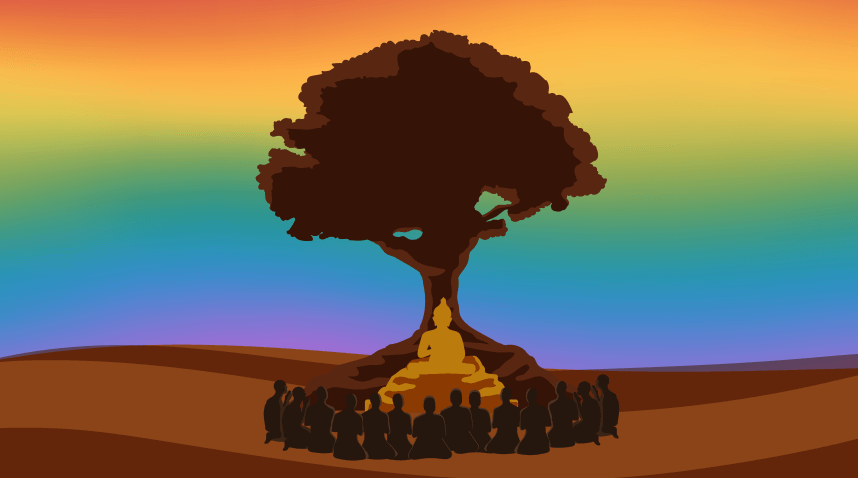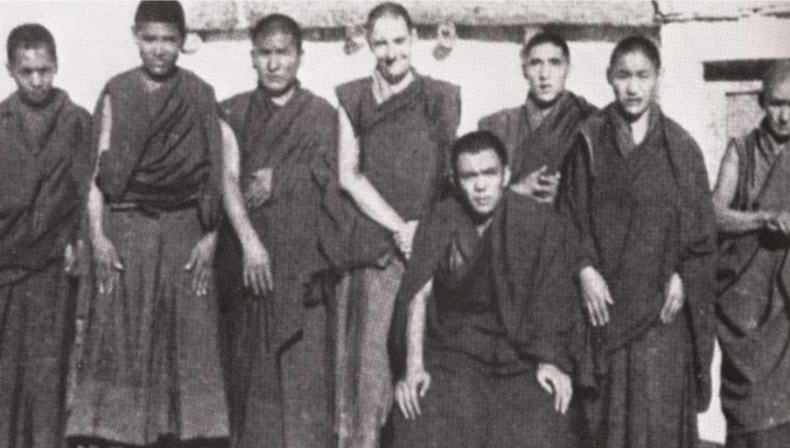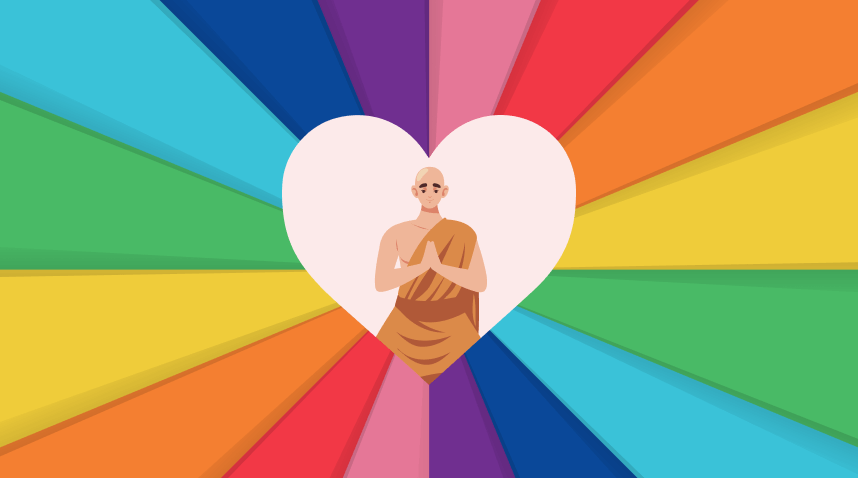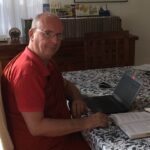Editor’s notes: This article has been kindly contributed by Bhante Shravasti Dhammika who’s works can be found on Budblooms. In addition, he has launched a new book Footprints in the Dust, The Life of the Buddha from the Earliest Sources, now available on Amazon.
Disclaimer: This article was written in the early 2000s and some terms used here may have new cultural meanings. We encourage readers to read the book ‘Out of Ordinary’ to get better context and nuances of the time. Any potentially offensive terms used are not intentional.
TLDR: Beyond black and white views applied to gender, Bhante Dhammika explores the story of a transgender monk, the suttas on the topic of transgender people, and a possible explanation of why it happens.
We are used to thinking of the world in black and white terms, of things being either right or wrong, up or down, one thing or another. A good example of this would be the popular but mistaken understanding of kamma as either good or bad.
The Buddha, by contrast, said that kamma can be good, bad or a mixture of the two (vītimissā dhamma), which of course accords much more with reality. In fact, few things are either 100% good or 100% bad.
When it comes to gender, we commonly assume that people are either male or female whereas the categories are not always that clear, a truth that the Buddha recognized centuries ago.
Buddha & His Recognition of Transgender Individuals

So, what is Buddha’s view on non-binary genders?
He was aware that there were those who were of indeterminate or mixed gender (i.e. partly male and partly female); he called them “men-like women” (vepurisikā), “those with the characteristics of both [genders]” (ubhatovyañjanaka), and sometimes spoke of what he called “sexual indistinctness” (sambhianī).
He made a rule that such people were not to be ordained as monks or nuns, probably not because he considered them to be immoral or perverted, but simply because there were no positions within the Sangha which they could fit into.
In fact, it is remarkable that the Buddha made no moral judgments about those whose gender was mixed. Today, the condition that the Buddha recognized in the Suttas are people who identify as transgender.
It should be understood that being transgender is different from being homosexual – the first is having the strong feeling that one’s gender is the opposite of what one’s body indicates, whereas the second is being sexually attracted to those of one’s own gender.
The first is about identity whereas the second is about sexual attraction. There are several stories in Buddhist literature about people changing their gender.
The most well- known of these, from the Dhammapada commentary, tells of the man, Soreyya, who was transformed into a woman after being entranced by a young monk’s physical beauty.
Of course, this scenario is not possible, but the story indicated an awareness of transgender desire. However, today medical science has made it possible for transgender people to change their gender.
The Story of Michael Dillion
One of the first people to have done this was Laura Dillon. He was born into an aristocratic English family in 1915 – his brother was Sir Robert Dillon, the eighth Baronet of Lismullen.
Educated at the best girls’ schools and Cambridge University and used to privilege, by the time he was 15, he started to feel he had been born into the wrong body, a female body. He started to cut his hair short and wear more masculine-looking clothes, which was thought of as eccentric but something he would grow out of.
He never did. When he was 24, he sought treatment for excessive menstrual bleeding and his doctor gave his the male hormone testosterone, thinking it would cure this condition. He also recommended that he consult a psychiatrist who eventually put his in contact with the pioneering plastic surgeon Dr. Harold Gillies.

The Transformation
Over a three year period, the doctor performed 13 operations on him which included removing his breasts, constructing male genitals and in effect transforming him into a man. Because of contacts in the records office, he managed to have his name changed to Michael and he officially became Michael Dillon.
He then embarked on medical studies and became a doctor, worked in the marine industry for some years, and published a book on being transgender without revealing that he himself was transgender.
The book attracted a great deal of attention from both doctors and psychologists as well as from the general public. This eventually led to Dillon being Michael Dillon when he worked as a ship’s doctor.

This led to Dillon being identified as transgender and him being hounded by the press wanting a bizarre and lurid story. So negative was the pressure that he decided to quietly disappear to India.
Journey to India
Long having an interest in Buddhism, he made his way to the Himalayas where he lived in a monastery for some years and later at the Mahabodhi Society in Sarnath learning Dhamma and meditation.

Later he settled in the Rezong Monastery in Ladakh where he ordained as a monk taking the name Jīvaka, after the Buddha’s doctor of that name.
For the first time in his life he felt comfortable and accepted, writing several books on Buddhism including a study of the Vinaya, and after a serious illness passed away in Darjeeling in 1962.
He also wrote an autobiography called Out of the Ordinary which Fordham University Press published in 2017, its delay in its seeing the light of day due mainly because his brother who tried to stop its publication.
Transgender: A Possible Buddhist Explanation
During Dillon’s youth as a female, he was often mocked and teased because of his distinct boyishness and after becoming a male, he was hounded by the press, thought of as a freak and rejected by his family and former friends.

Today, some transgender people can suffer insult and even physical violence. The problem does not lie with them, but with people’s ignorance and misunderstanding. Buddhists at least should have more understanding of transgender people because their condition may well be explained by Buddhism – specifically by the doctrine of Rebirth.
A person may be reborn as, say, a male in successive lives during which time masculine attitudes, desires, traits and dispositions become strongly imprinted on their mind.
This would determine that he be continually reborn into a male body or that his consciousness would shape the new embryo into a male form – whatever factors are responsible for the physical characteristic of gender.
Then, for either kammic, genetic or other reasons, he may get reborn into a female body while retaining all the long-established masculine psychological traits. Of course, this same process could be responsible for a male feeling that she is really female.
If this or something like it, is the cause for being transgender, it would mean that this condition is a natural one rather than a moral perversion as some theistic religions maintain.
In the Udāna, the Buddha said that traits or dispositions (vāsasā) developed through a succession of lives (abbokiṇṇanī) may well express themselves in the present life and that they need not be “an inner moral fault” (dosatara).
Thus, informed Buddhists should be accepting and understanding if or when they encounter a transgender person.
Wise Steps:
- Understanding that transgender persons are equally capable of practising the Path we should offer them support rather than criticise them
- Recognise that there are many spectrums to the world rather than viewing things in black and white


